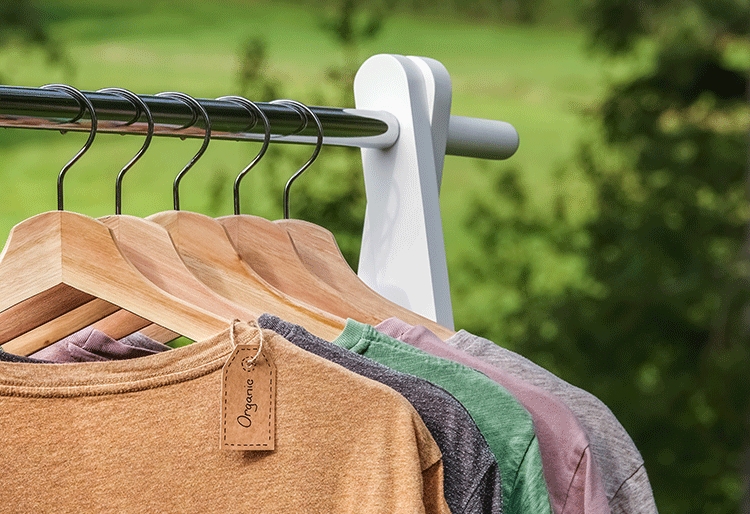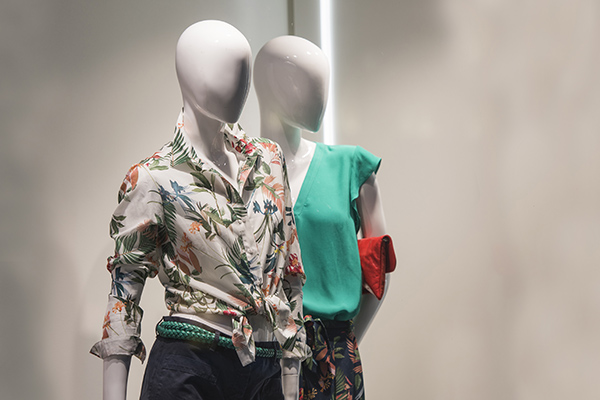Sustainable Fashion: Responsible Clothing Consumption
To know the environmental, social and economic impact of the textile industry in a comprehensive way and to attempt to reduce it.
IT’S ECO, IT’S LOGICAL
Share

Do you usually look at the labels on clothes to know what they are made of? Do you know their origin? Do you know the natural resources that are used to produce a t-shirt? Almost all the clothes we wear are made from natural materials, such as wool, cotton and silk, as well as synthetic fibres such as nylon, lycra or perlé, which are pro-duced by chemical processes derived from petroleum.
According to the MacArthur Foundation's 2017 report, global clothing production has increased over the past 15 years, due to "an increase in the middle classes" and the growth in "the phenomenon known as fast fashion". In addition, our use of a single item of clothing has decreased by 36%.
Over the past 15 years, global clothing production has multiplied, while our use of garments has decreased by 36%.
Resources for producing a piece of clothing
-Water: according to estimates by Arjen Hoekstra, founder of the water foot-print concept, some 2,900 litres of water are used to make a 250 gram cotton T-shirt (including cotton cultivation, dyeing, washing, etc.) and 11,800 litres for 1 kg jeans.
- Pesticides for crop cultivation, especially cotton.
- Chemical detergents and whiteners for cotton washing.
-Dyes and fabric softeners: Synthetic dyes use heavy and toxic metals such as lead, nickel, chromium VI, phthalates (used with PVC as a base for stamping), etc. which are harmful both for health and the environment.
- Conditions and quality of life of the people who make the clothes. The textile industry is mostly relocated to developing countries.
- Carbon footprint: CO2 emissions during production and transport of clothing from production sites to countries of sale.
- Waste: Excessive production and consumption of clothes means dumping and tons of waste. Spain generates 8 to 10 kilos per person per year.

Do you use clothes responsibly?
- Reuse clothing that you no longer use, for example, to make a toy or cloth, and opt for recycled clothing. This reduces the environmental impact because it contributes, among other things, to saving water and energy and to lower waste production.
- Choose sustainable raw materials, such as recycled cotton, organic hemp, or flax from organic farming or recycled fabrics. And, as far as possible, the fabric should not be a mixture of natural and synthetic fibres (such as cotton and polyester), as this makes it more difficult to recycle. Also choose natural dyes such as clays, plants, components of vegetable origin, different shades of or-ganic cotton (brown, green, white), etc..
-Look for the fair trade mark on the label to ensure that human rights have been respected during manufacture and choose a fairer distribution of wealth. You can also opt for local handcrafted clothing with guarantees of dignified working conditions.
-In order to reduce your textile carbon footprint and promote the local econ-omy, make sure the garment is manufactured and/or sold close to where you live.
-You can also exchange clothes with family and friends or buy second-hand clothes.
-Try to make the most of clothes so you don't have to change them so often, prioritising new combinations rather than buying new clothes.
-You can also buy clothes and shoes, such as slippers made from recycled materials, such as marine debris and garbage. The Internet can help you to find these and offers alternatives.
-Look for quality clothing that will last, as this will reduce consumption and, therefore, pollution and consumption of natural resources.






